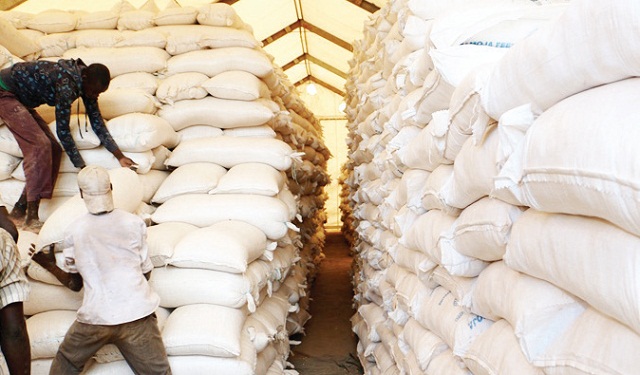
🇺🇬 Export earnings ⬆
2017/18 – 2018/19
Gold 🥇 US$343m – US$1,068m
Fish 🐠 US$146m – US$185m
Tobacco US$54m – US$85m
Cocoa B US$58m – US$73m
🇺🇬 Export earnings ⬇
2017/18 2018/19
Coffee☕ US$492m – US$416m
Maize🌽 US$124m – US$59M
Beans US$123m – US$39m
Kampala, Uganda | THE INDEPENDENT | Uganda exported less merchandise in the 2018/2019 financial year compared to the previous year, according to information from the Bank of Uganda research department.
The country’s export earnings were only upped by gold, which came from other countries but was re-exported from Uganda.
Dr. Adam Mugume, the Executive Director for Research at BoU, said the main drop in exports was in maize and beans. For coffee, he said, the drop was in volume but also the prices of the cash crop nosedived.
Flowers, hides and skins, and tea also saw a drop in their export earnings in the 2018/19 financial year. Also, a fall was seen in light manufacturing products.
Mugume said it was not necessarily about being out competed in the country’s traditional market, Kenya, but also because our customers had stocked.
According to figures compiled by the Central bank, coffee earnings dropped from US$492m in 2017/18 to US$416m in 2018/19 financial year. Maize had the sharpest drop from US$124m in 2017/18 to US$59M in the just concluded financial year.
Beans exporters also faced it rough in the last financial year with their earnings falling from US$123m in 2017/18 to US$39m in 2018/19 financial year.
Christopher Makode, the director of Mega Holdings Ltd, who deal in maize exports, told URN that one of the reasons could be that production was low locally last year amidst high demand – especially from schools.
According to the Famine Early Warning Systems Network (FEWS NET), a kilogram of maize now costs Shillings 1200 up from Shillings 600 it cost in August 2018.
The slight up in prices is due to a drop in production as farmers stayed away from the crop after prices fell heavily in the 2017/18 financial year.
Julius Kalonde, a member of the Uganda Maize Exporters Association, said Kenya had turned to Tanzania for its maize needs because Uganda’s quality was poor due to poor post-harvest handling.
Overall, according to BoU, Uganda’s imports went up by 20.7% last financial year.
While exports were up by 12% if you include gold, figures show a fall of 9% if you exclude it.
Uganda is on the offensive to increase export earnings so as to reduce on the trade deficit but also support the local currency against major currencies like the US dollar and British pound.
******
URN
 The Independent Uganda: You get the Truth we Pay the Price
The Independent Uganda: You get the Truth we Pay the Price



Gut